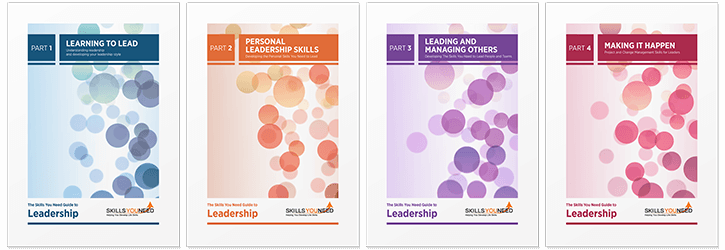4 Tips for Getting Your Team to Think Creatively
See also: Creative ThinkingA creative culture in your company can propel your business to new levels of growth.
Today, innovation and creativity are vital to business progress. As stated in an infographic by Washington State University, “Some of the most successful companies in the world became successful because they looked at the status quo and decided it wasn’t for them. Others are emerging with game-changing technologies that disrupt the rest of the industry, or create an entirely new industry.”
For instance, consider companies like Kickstarter, which pioneered the idea of reward-based crowdfunding to fill a gap in the market. Think of companies like Uber, which have effectively changed the way we understand public transportation today. Consider Tesla, a company that is pushing automotive technology in new and exciting directions. At the heart of these revolutionary companies is one shared core value: creativity.

Innovative thinking is essential for any business to succeed and set themselves apart from the competition. However, getting employees to think differently is not always easy. Testing out new or radical ideas will often raise eyebrows, and employees will be uncomfortable doing so without the right supportive framework in place. Here are some tips to get your team to start thinking creatively:
1. Schedule Brainstorming Sessions
Frequent brainstorming sessions are a great way to get your team’s creative juices flowing. In an article on Forbes, Janine Robertson, a member of the Forbes Communication Council, recommends building ongoing brainstorming sessions into your team’s weekly or monthly meeting schedule. According to Robertson, “This creates a culture of open engagement and ensures your team that their ideas are valued.”
Additionally, she recommends following up with incentives for selected ideas. Gift cards, a lunch out, or a morning coffee are small ways to show your appreciation and promote future innovation. Brainstorming sessions are an excellent means to force your team’s members to stretch their limits and think outside the box.
2. Build an Open Environment
Without the right environment, your team is less likely to be inclined to share their ideas. However, an open and inviting environment allows for team members to step outside their comfort zone. Building an open environment is not just about providing beanbags and cool team lounges. Rather, it means a workplace cultural shift involving letting your team know that they can and should dream big.
Your team should feel like their voice is appreciated and that they have the freedom to speak up without fear of consequence. In her article for HRZone, Megan Reitz states that one of the best ways to create a “speak up” culture is to, “Be curious about what people have to say and accept that there are always multiple perspectives on how things should be done – none of which are necessarily right. Be open to discussion rather than shutting the conversation down immediately if you don’t agree. Notice what you do in the conversation that allows others to open up, and equally what you do that shuts them down.”
So let your team test out ideas, exploring what currently works and what needs refining. Giving employees opportunities to do this is essential if you want to spark creativity and growth.
3. Encourage Collaboration
While it takes one person to come up with an idea, it requires many more to make it into a reality. Collaboration is an integral aspect of creativity, and it’s a major part of what is known as design thinking. Design thinking involves a willingness to be flexible, empathetic, and positive during collaborative efforts. This sort of thinking is important as it opens the door for positive outcomes for everyone involved.
It is a collaboration that allows for all the other aspects of design thinking to manifest — subsequently fueling creativity at work. Bringing in new perspectives when testing out ideas can grant impactful insights into how products should be designed. It can also help your business to create goods that appeal to a wider audience. Thus, you should encourage the members of your team to collaborate often, and work together to come up with new solutions.
To create a collaborative culture, you need to remove any roadblocks that are in the way. One significant hindrance to collaboration is outdated metrics and rewards. In his article for Forbes, Jacob Morgan explains, “If your organization focuses on rewarding employees for individual performance as the main driver of success then it will become quite hard to encourage employees to share and communicate with each other. Why would they want to? There is nothing wrong with rewarding employees for great performance but it’s also crucial to reward teamwork.”
Make sure you set up a system that measures success by both individual and team work.
4. Be Transparent
An article by the Chartered Management Institute states that “A big idea without a target is just a big dream. To allow people to think creatively, it helps to take out a level of uncertainty.” The more your team is aware of overall business goals and new opportunities, the more involved they are likely to feel. In turn, this fosters added creativity, stemming from your team’s desire to participate in company growth.
Thus, you should be transparent as possible about company goals and aims. Be clear with what you want your team to achieve and how this fits into the bigger picture. Tie your focus to broader organizational objectives — perhaps even to your mission statement. Having a clear target will allow team members to spend their time coming up with new solutions, and not wasting time figuring out what the target is in the first place.
And make sure you’re being truly transparent. Your employees know far more than you think they do, and they know when you’re being dishonest. If you fail to live up to transparency goals, you can do a great deal of harm to employee engagement. Disengaged employees aren’t focused on being creative — and that can hurt your bottom line.
Final Thoughts
Creative thinking is the difference between an average company and one that makes a significant impact. Use these tips to get your team to think creatively and take your business to new heights.
Further Reading from Skills You Need
The Skills You Need Guide to Leadership eBooks
Learn more about the skills you need to be an effective leader.
Our eBooks are ideal for new and experienced leaders and are full of easy-to-follow practical information to help you to develop your leadership skills.
About the Author
Magnolia Potter is from the Pacific Northwest and writes from time to time. She prefers to cover a variety of topics and not just settle on one. When Magnolia’s not writing, you can find her outdoors or curled up with a good book.


